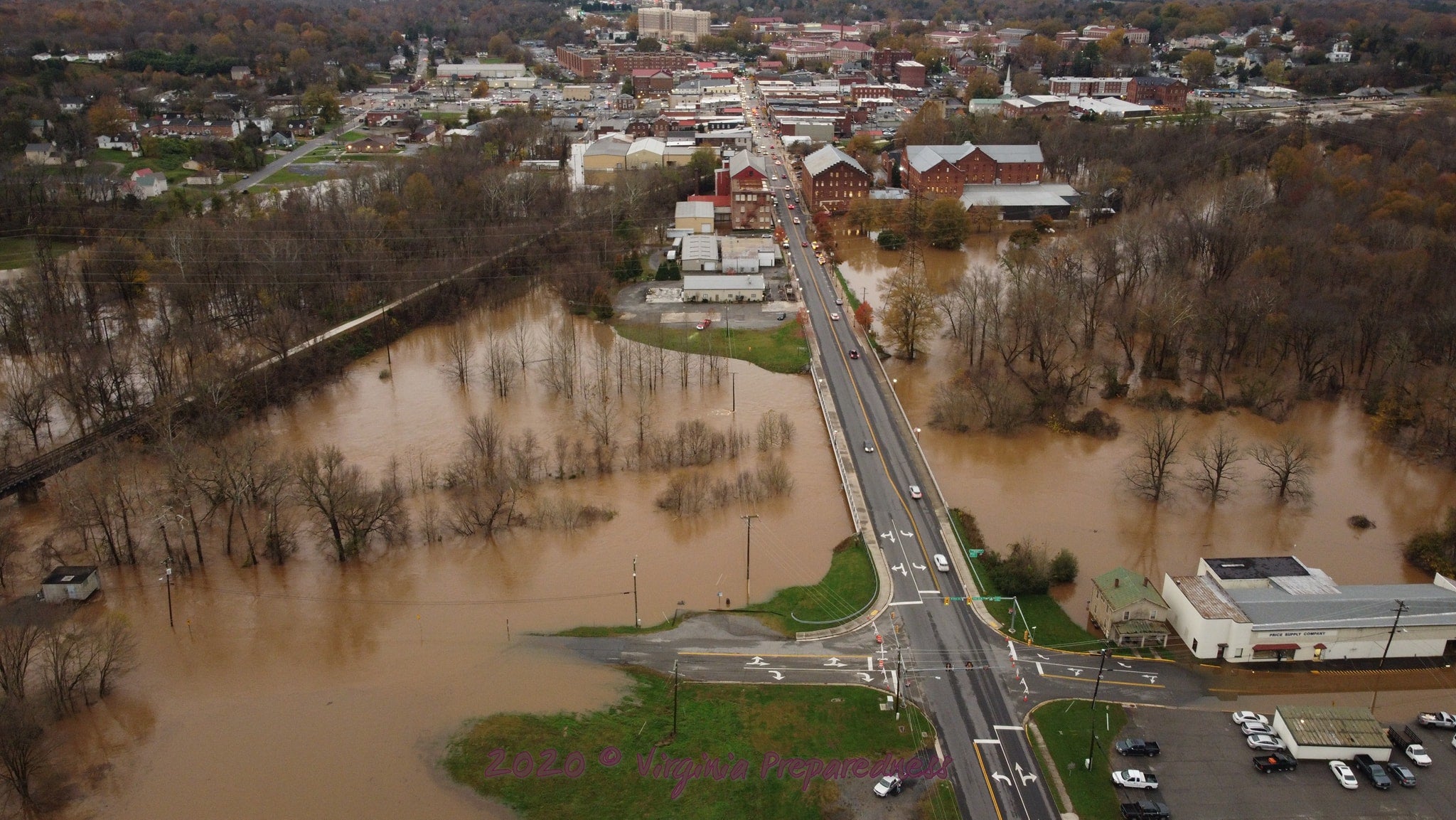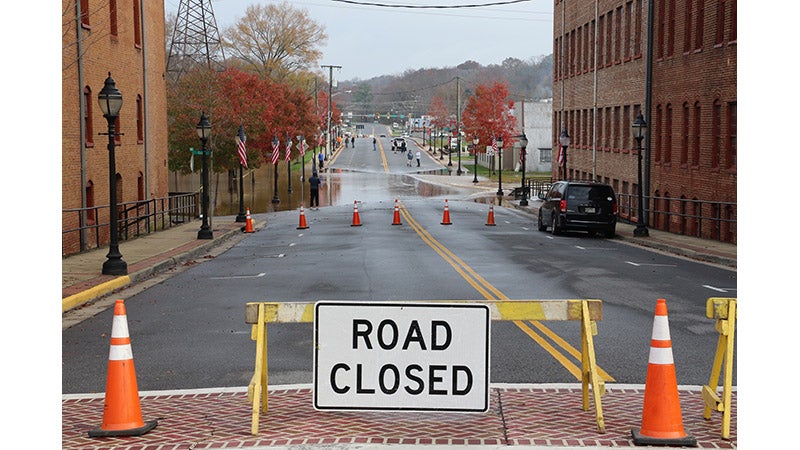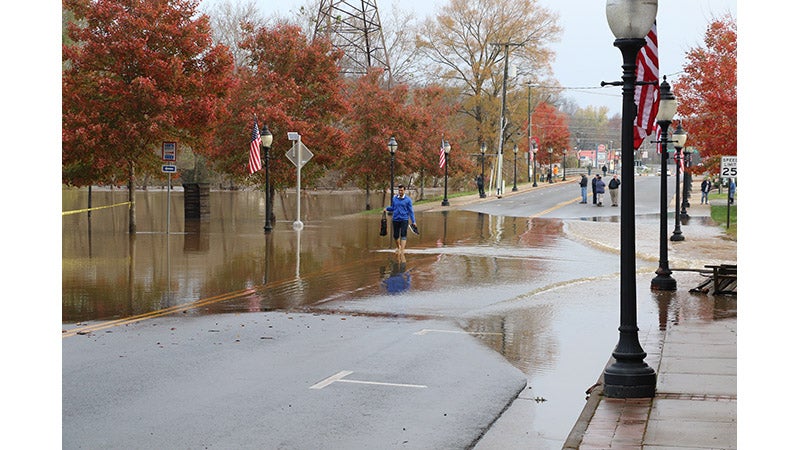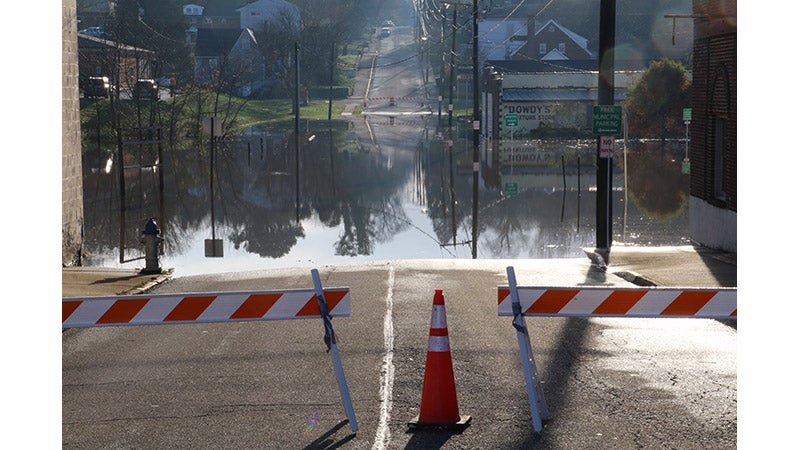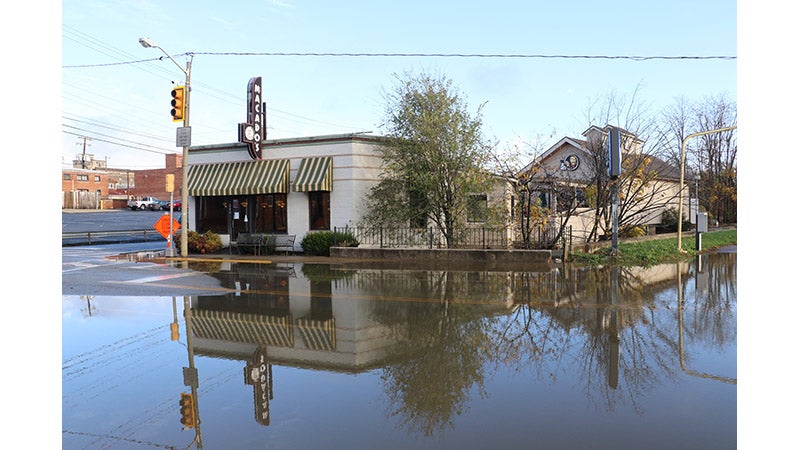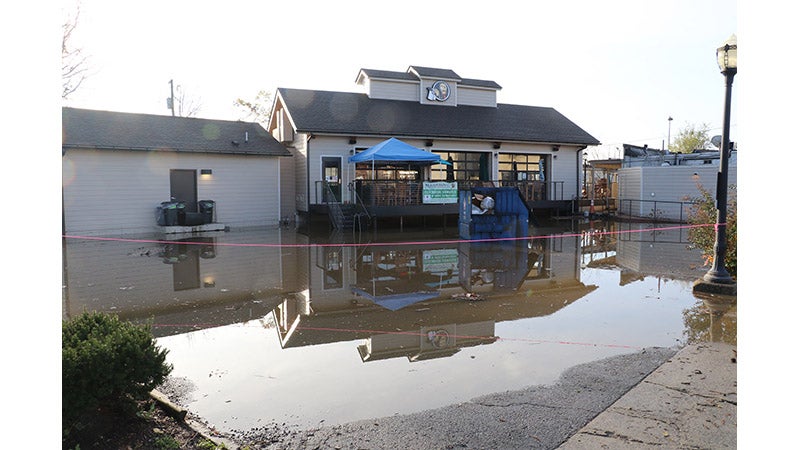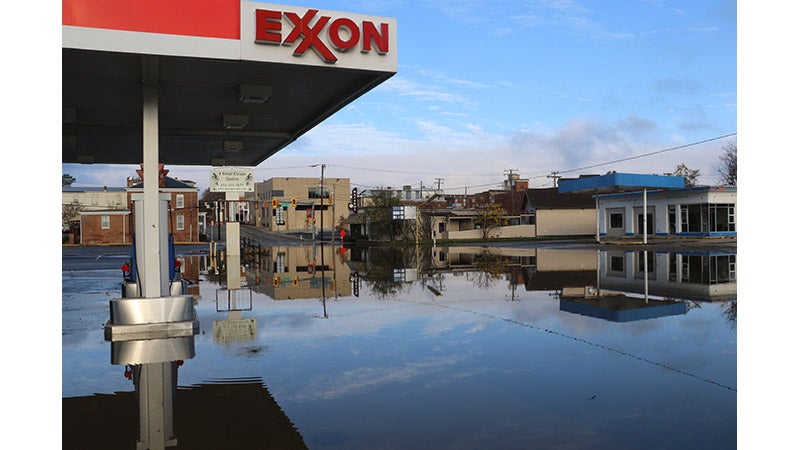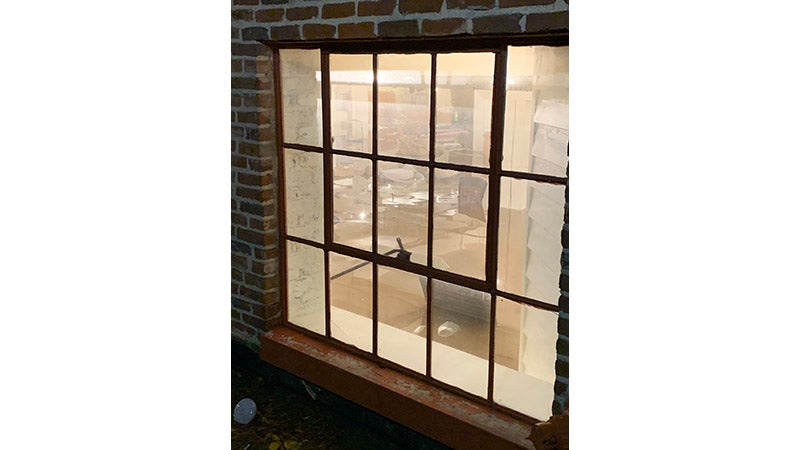Flooded: High water affects travel, businesses
Published 6:00 am Tuesday, November 17, 2020
|
Getting your Trinity Audio player ready...
|
By Titus Mohler and Alexa Massey
The Farmville Herald
While a significant amount of water washed through Farmville Thursday, Nov. 12, and Friday, Nov. 13, it was not close to matching the greatest amount of flooding the town has seen previously.
Damage to businesses was still done, however, and some roads in both Prince Edward and Buckingham counties were closed.
In Farmville, the Route 15 bridge at the Buckingham County line, the Route 45 North Main Street bridge to Cumberland County and East Third Street between South and Virginia streets were closed after Thursday’s flooding, but they were reopened by late Friday morning, restoring normal travel in and out of Farmville.
Farmville Town Manager Scott Davis said Friday morning that the north end of town had been the most affected by the flood waters, particularly East Third Street and Second Street between South Street and South Virginia Street below the DMV, as well as all of the area adjacent to the river from Mill Street to Plank Road, River Road, and the trail system near Buffalo Creek.
Some Farmville businesses were closed Friday morning and others were dealing with the aftermath of water damage as a result of Thursday night’s extensive flooding.
Green Front Furniture President Den Cralle said Friday the majority of the flooding seen at Green Front occurred in the basement of Building 10, also known as the Craddock Terry building located next to the LOVE sign on North Main Street.
Cralle said the basement houses outdoor furniture, and the items affected could likely be hosed off.
“We still might do some sort of sale next week, I’m sure,” he said Friday.
The basements of Building 8 and Building 9 took minimal damage due to an approximate two inches of flooding as well, Cralle said.
They were closed Monday, Nov. 16, but the hope was to open Tuesday, Nov. 17, with a flood sale.
Green Front was open Friday with the exclusion of Building 10. Cralle said levels 1-3 of the building would likely be open Saturday, and they were. He said the basement would remain closed until determined safe to reopen, and it remained closed Monday.
“In ’96 there was Hurricane Fran,” he said Friday. “I think this was a little bit less, so I know that Green Front got through before, and we can definitely get through it again.”
Danny Todd, president of Price Supply Company Inc. on Old Plank Road in Farmville, said Monday it had been since 1996 that his store had experienced the kind of flooding it did last week.
“We had over 17 inches of water in the building (last week), and we’re having to gut 36 inches of walls and get the insulation out,” he said. “We’ve had the Prospect (Volunteer) Fire Department come in and hose the mud out for us, and it’s a mess.”
The store was still managing to serve customers Monday while dealing with cleanup.
The Macado’s restaurant in Farmville was closed Friday due to the flooding seen around East Third Street. Restaurant Manager Sam Andrews said Friday there were no damages to report. After some cleanup, the restaurant was able to reopen at 8 a.m. Saturday, Nov. 14.
Davis said the town was also aware Friday of flooding in the Mill Room on Mill Street.
Buckingham County Emergency Management Coordinator Cody Davis said Friday Buckingham had seen a number of roadway closures and driveway washouts at a few private residences as a result of Thursday’s rain, although county businesses appeared to be unaffected.
Cumberland County Administrator Don Unmussig said Friday morning that with the exception of areas closest to the Appomattox River, Cumberland had been spared much of the flooding damage seen elsewhere.
Farmville-Prince Edward Historical Society President Jimmy Hurt put the flooding in Farmville into historical context for the town.
“Compared to the floods we’ve had in Farmville, I would say this was more like a water event,” he said Friday afternoon. “This happens all the time in Farmville. Every couple years, as long as I can remember, even as a child playing around on my bicycle, I can remember having events like we had yesterday.
“I was over at the post office last night, and I didn’t even bother going over there and looking at it, because you know, it’s the same ol’ thing to me.”
Years ago, the historical society asked him to put together a presentation on the flood that came to Farmville in 1972.
“When I did that, I went back through all the meteorological records and got every time it flooded in Farmville,” he said. “The flood level — I figured out each year how much it was and made charts and graphs, and as far as I know, 1940 was the second-worst flood since records have been kept, and ’72 was the worst.”
He noted that 1996 featured another deep flood in Farmville.
“Since then, there really hasn’t been anything other than water backing up on Second and Third and Fourth streets,” he said.
He is quite familiar with those areas, pointing out that in the past, he lived on Second Street and worked on Third Street.
“I can just about look at the aerial photos, which I did this morning on the internet, and tell you the flood level,” he said Friday. “‘Ah, it came up to right here on the street.’
“Now in ’72, I went around and looked at all the photos, and I could tell you where it went on each street and so on,” he continued. “And I would say it was almost 29 feet above flood level, I believe, in ’72, and I don’t think this (time) would have probably been maybe 10 or 12 feet.”
He said that judging how the water got up in Third Street, like it did Thursday, it was probably five, six or even seven feet lower than the flood of ’40.
“So I hate to belittle yesterday, but just really, to me, it wasn’t (anything),” he said Friday. “It happens all the time.”
Poulston TV & Appliance, located at 609 N. Main St. in Farmville, typically has a front row seat for the flooding or water events occurring in town.
“We remember that big one in 1972,” Billy Poulston said. “That’s the big one.”
He noted that as a result of that event, his store had six feet of water inside the building.
The last time he had flooding in his business was in 1996.
The event last week ended up being simply a close call.
“God was good to me, because it came right to my floor level without flooding anything,” he said.
He stayed at the store all night between Thursday and Friday.
“And of course, I had the doors sealed, and I had taken precautions for any water that would come in from the outdoors,” he said. “I also sealed up the storm drains, because your storm sewer stuff backs up into your building if you don’t seal them off.
“We had no damage from this other than extra work and just a small amount of puddles in the floor, seepage through the wall,” he said.
He drew another comparison between last week’s flooding and the flood of 1972.
“If I have measured correctly by statistics, because I have it written on one of the outside walls here, this flood we just had last night would have had to have six more feet of water to equal ’72,” he said Friday. “I’m just absolutely thankful this morning that things are in good shape for me.”
Hurt explained how water events and flooding happen in Farmville.
“What happens is, most of the water from Appomattox County and Buckingham, as it falls, it has to come into the Appomattox River,” he said. “Well the elevation up at Holliday Lake in Appomattox — that’s where the Appomattox (River) starts — as the water flows out of that lake, that lake is (at) an elevation of approximately 600 feet above sea level.
“When it gets over there to Poulston’s, the level going under that bridge is right at 300 to 305 feet on a normal day,” he continued. “So you’ve got all the water from Appomattox and Buckingham. Every time it has a hard rain, all that water runs into the Appomattox, and it has to come through Farmville.”
He said the water is trying to get on down to Amelia and Petersburg. If there’s any amount of rain in Farmville, Amelia and Petersburg, the Appomattox River essentially fills up to capacity.
“So as the water comes on down from the Appomattox and Buckingham and it gets to Farmville and the river is already coming over its banks, it has nowhere to go, but it starts backing up,” he said.
“Each time it rains, it all depends a whole lot on how much they have upstream in Appomattox and Buckingham. If they have a lot, of course, and we do too, it backs up in Farmville.”
He said the Appomattox River simply cannot get the water through Farmville and out of town quickly enough.
“It’s been happening for hundreds of years,” he said.


